Scumpia: description and varieties, planting and care
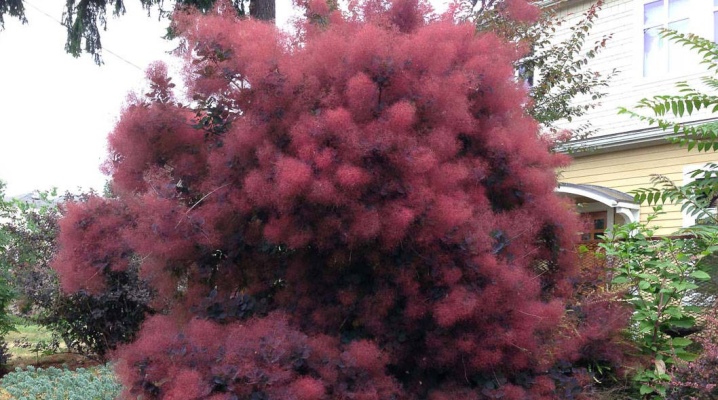
The beautiful ornamental scumpia shrub was originally cultivated as an extremely useful economic plant - a dye widely used in leatherwork was obtained from it. With its spread outside North America, it gained popularity as a garden crop due to its unusual leaf color and original paniculate inflorescences. Despite the general heat-loving nature, the culture easily adapts to the conditions of the Russian climate. Planting in open ground and scumpia farming techniques will not seem difficult even to people who do not have much experience in landscape design.
The woody form of the plant is much more cold-resistant. The shrub is not entirely adapted to the climate of the middle zone - it is better to study in advance the description of the varieties recommended for the Moscow region. Yellow, red, purple and other types of scumpia in landscape design are valued for the rich color of the foliage. But for that in order for the plant to retain its spectacular appearance, it requires the attention of the site owner, periodic pruning and crown formation.
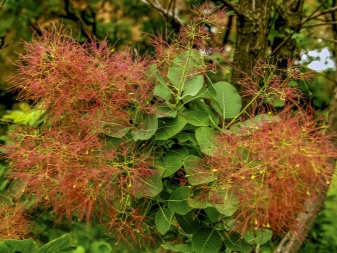
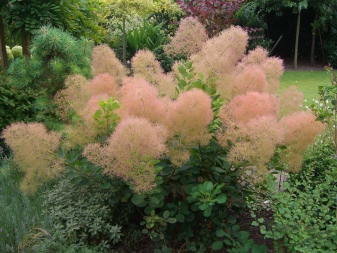
Peculiarities
Scumpia is a representative of the sumac family, a deciduous perennial, depending on the species, shaped like a tree or a bush. In culture, the plant is bred for economic and decorative purposes in a temperate climatic zone. The scumpia bush grows from 1.5 to 3 m in height. Trees sometimes reach 5 m, but they are found mainly in North America.
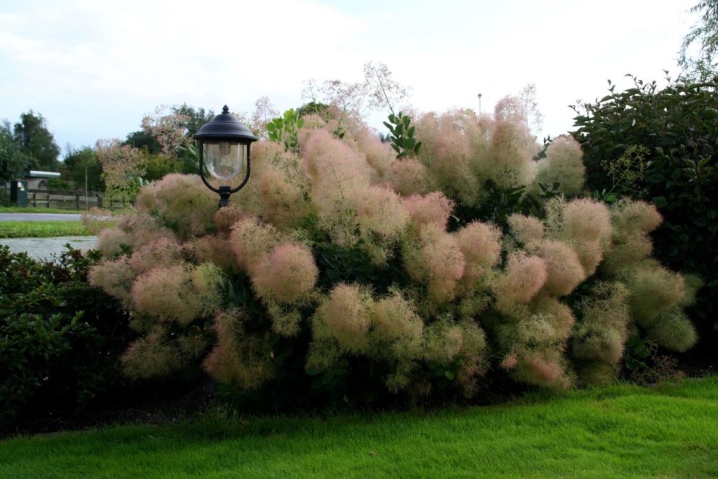
The scumpia has quite a few informal names. In the United States, it is called American Smoketree - a smoking or smoky tree, in Europe it is called a wig bush, yellowberry, Venetian sumac. The description indicates the general similarity of the species - they have:
- brown bark;
- bare green or burgundy red shoots;
- leathery oval leaves, dark red, green in summer and spring, purple in autumn;
- flowers are greenish or cream, forming fluffy paniculate inflorescences;
- fleecy stalks, covered with red-brown pile during flowering;
- fruits in the form of a drupe that changes color from green to black when ripe;
- life expectancy up to 100 years;
- bloom begins in May or June.
Trees are more resistant to cold, but less decorative. The shrub shape, with proper crown pruning, can become a real garden decoration.
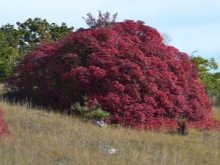

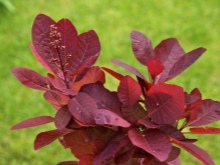
Types and varieties
Plants of the scumpia genus are represented in nature and cultivated in two species. Cotinus americanus or American scumpia is a tree that grows up to 5 m in height in temperate climates. In colder conditions, it does not reach its maximum size, demonstrates good frost resistance. It is distinguished by large, up to 12 cm long, leaves, inflorescences up to 15 cm, painted in red-brown tones with an admixture of greenery. The tree has no industrial value, it is grown only for decorative purposes. Scumpia American is especially effective in autumn, when the green leaves acquire a purple-red hue.
Cotinus americanus occurs in nature in the states of Texas, Oklahoma, Kentucky, Tennessee. It is worth noting that the tree prefers poor, not too moist soils with a predominance of rocky terrain.
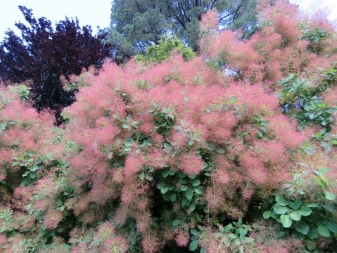
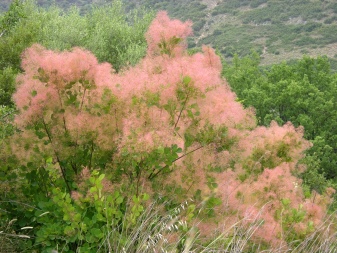
Cotinus coggygria - the second variety.It is also known as tanning skumpia or ordinary, in nature the plant is found in the mountainous regions of the Himalayas, in China, the coastal regions of the Mediterranean and Black Seas. In Asia Minor, China, in the Caucasus, the plant is also widespread. The average height of an adult shrub does not exceed 1.5-3 m, sometimes it is formed as a tree with a branched crown on one trunk, but more often it branches from the base.
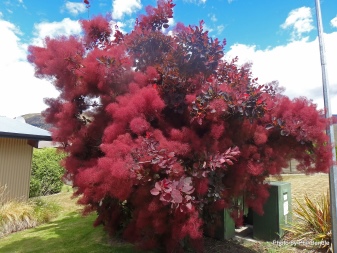
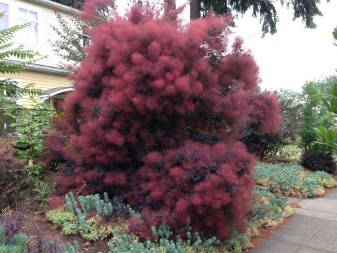
Scumpia ordinary has smaller leaves - they reach 7 cm in length, panicle inflorescences are larger, up to 30 cm, but are located less frequently than in the American one. There are several popular forms of this variety - for example, creeping, weeping, red-leaved. When choosing a plant for planting, it is worth considering that varieties with a green leaf plate have a higher winter hardiness. Red scumpies are best grown in a subtropical climate, although among the breeding subspecies there are those that have already been adapted for the Moscow region.
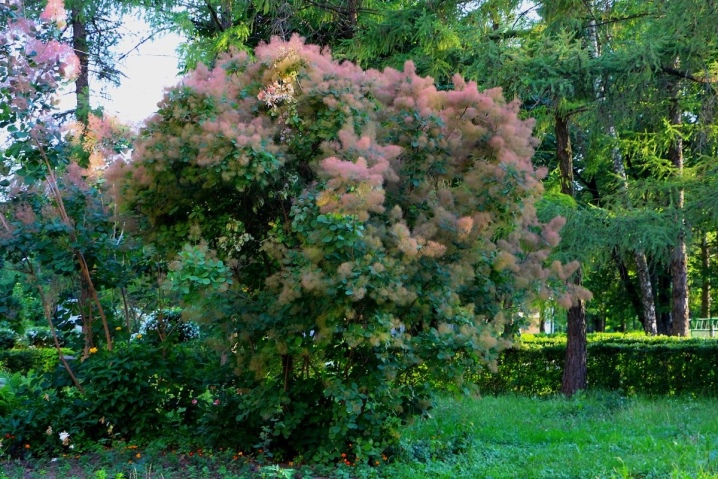
We list the most popular varieties of a shrub plant suitable for central Russia.
- Young Lady. Quite tall variety Young Lady reaches a height of 4 m. The plant has a green leaf color. The bush can grow in its place up to 60 years, it is distinguished by excellent decorativeness, frost-hardy. The flowers are initially green in color, during the flowering period they change to creamy beige and then to pink.
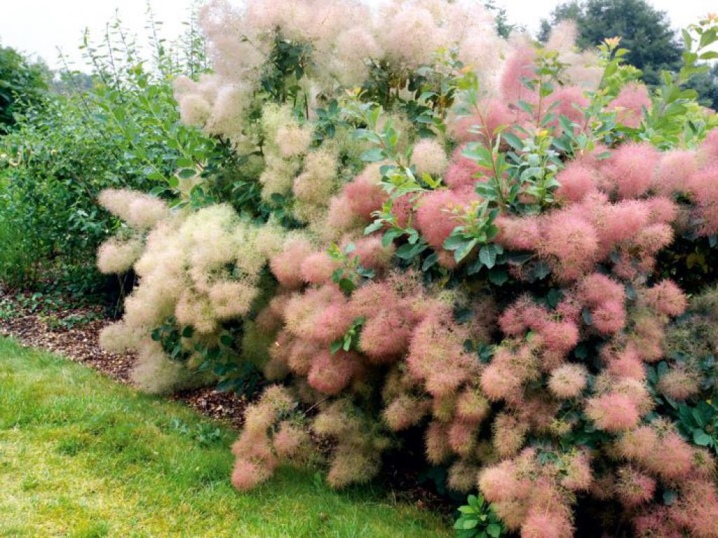
- Lilla. This hybrid is a smaller version of the Royal Purple variety, bred by a Hungarian breeder. She has already won many awards at international exhibitions. Spring foliage has a wine-red hue, summer foliage is deep purple, in autumn it is golden, orange, scarlet. An adult bush reaches no more than 1.2 m in height and in diameter, the crown is rounded, abundantly decorated with pink panicles during the flowering period.
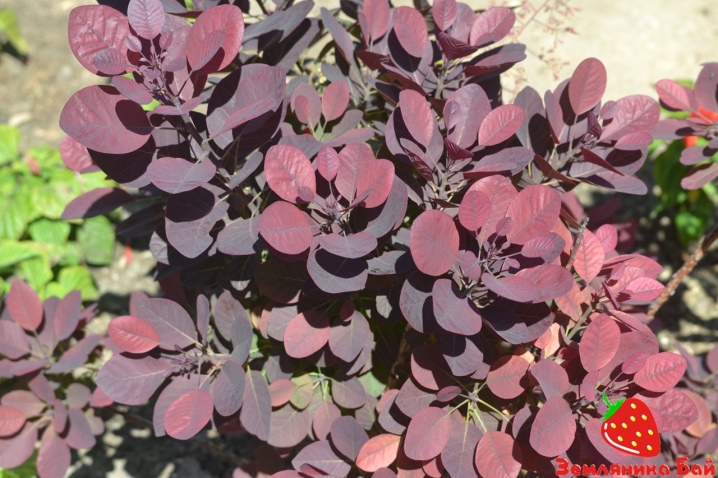
- Rubrifoli. Not too cold-resistant variety, not very suitable for the Moscow region and the climate of the middle zone of the Russian Federation, but with careful shelter it may well be grown. The height of an adult bush is 3-5 m. The plant is covered with ovoid leaves with a purple-lilac color. Its crown looks very decorative, capable of decorating even the most luxurious landscape.
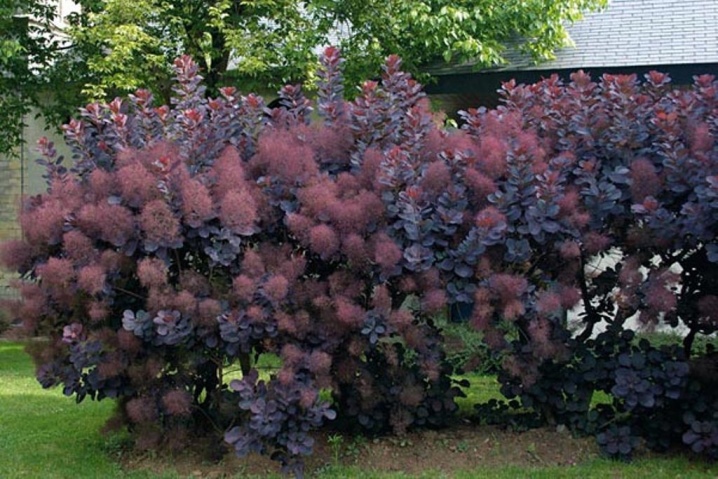
- Golden Spirit. Unusual yellow scumpia with orange border of leaves and veins. In partial shade, their color changes to yellow-green, in autumn the color becomes orange-scarlet, yellow, purple, so it looks incredibly decorative. This is a favorite variety of landscape designers who highly appreciate its riot of colors and unpretentious care.

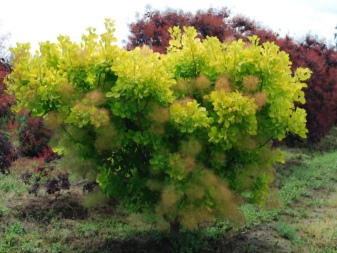
- Royal Purple. A compact, slow-growing bush that rarely grows more than 150 cm in height. Its luxurious purple crown lends itself well to pruning, shaping, but also naturally rounded. The leaf plates of the plant are large, in summer they are painted in a red-brown tone, by autumn they acquire blue-violet shades. The flowers are red with a pronounced metallic sheen, forming lush brushes.
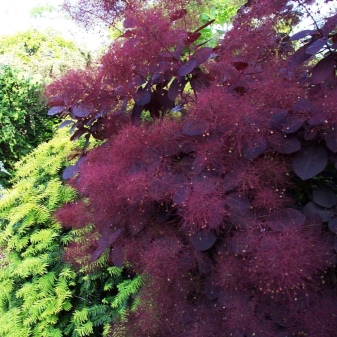

- Follis purpureus. A beautiful burgundy and purple variety of scumpia. By the age of 5, this hybrid grows to only 0.8 m, in an adult bush, the crown height is 2.5 m with a diameter of up to 3 m.The plant blooms with yellow-green panicles, picturesquely scattered over the spreading crown.
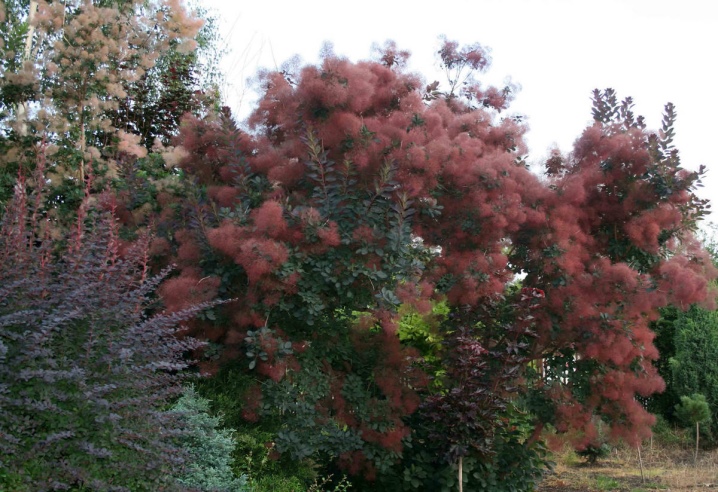
- Velvet Cloak. A variety with unusual, purple-scarlet, in places darkened to black leaves. The luxurious crown remains bright throughout the season, and only at the end of autumn it turns red. Inflorescences are large, composed of small pink flowers.

- Grace. One of the tallest varieties, the shoots reach 5 m in height. This highly branched shrub belongs to the red-leaved scumpia, in autumn the purple-red hue of the leaf plate is replaced by a flaming scarlet. The inflorescences have a conical shape, rather large, up to 20 cm in length, painted in pink-purple color.
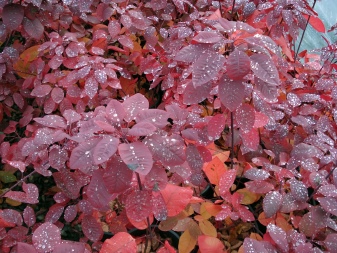

Almost all of these varieties are adapted for growing in the climate of the Moscow region.However, despite the acclimatization, you should not neglect the shelter for the winter.

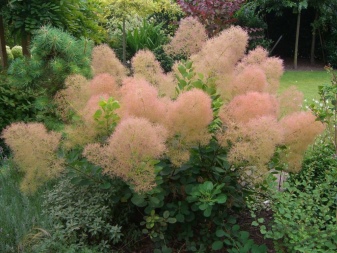
How to plant?
The planting of the scumpia is made taking into account the peculiarities of the local climate and the type of root system of the seedlings. With the right actions, a shrub or tree can easily be rooted even in climatic zones that are not very suitable for growing it.
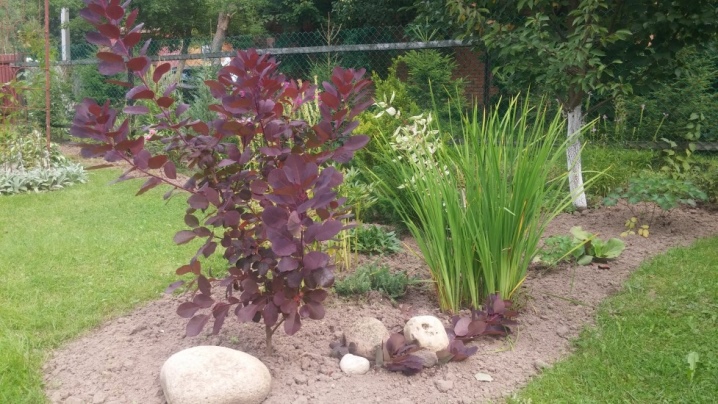
Optimal time
Scumpia container seedlings can be planted outdoors throughout the warm season. For acclimatization in the Moscow region, it is worth choosing plants aged 2-3 years, which have already survived more than one winter. Summer is usually used for rooting cuttings - in this case, the planted shoots will have time to take root. Layers are formed in the spring. If reproduction is carried out by dividing the bush, it is recommended to carry it out in the fall, but not too late.
It should be borne in mind that scumpia has a long growing season... The timing of planting is very important for her. If late autumn is chosen for rooting a seedling, it may not have time to take root until frost, and when placing it in spring, it is important to remember that the growing season should not fall on the peak of a hot summer. With seed reproduction, sowing is carried out in early spring or late autumn, seedlings will appear the next year.
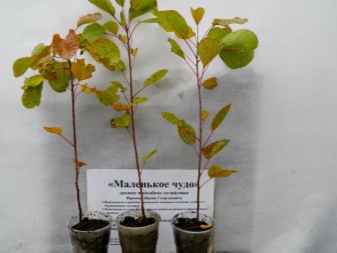
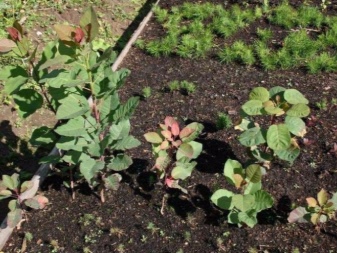
Seat selection
Scumpia is a plant with a branchy, spreading crown, its diameter reaches 4 m.Accordingly, when planting, you should maintain a distance of at least 2 m from a building, building, fence.In addition, both the shrub and the tree need a sufficient amount of sunlight. Partial shade is acceptable, but with mandatory protection from wind and drafts. The plot must be spacious, it is worth following the recommendations for the distance between neighboring plants.
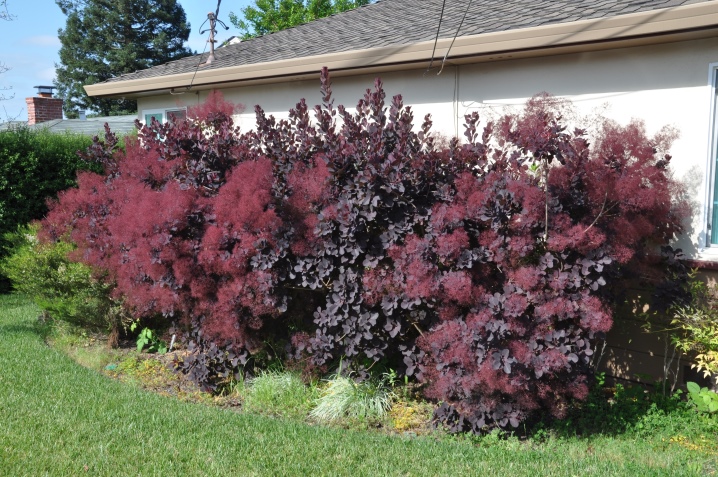
When choosing the type of soil, preference should be given to light, rather loose soils with a neutral or slightly alkaline composition. However, in its natural environment, scumpia grows successfully in soil with high acidity, heavy clay composition... The shallow root system makes it possible to root the plant even on rocky ground. Only lowlands, wetlands, places where groundwater is high are categorically contraindicated to it.
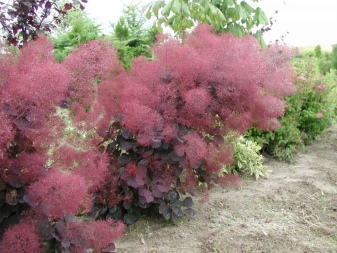
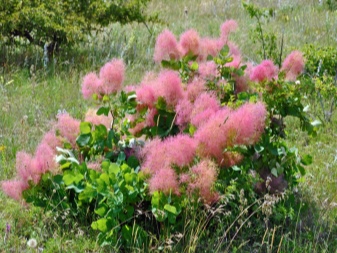
It is not recommended to plant scumpia next to thorns, ash-leaved and holly forms of maples, black poplar and some other trees and shrubs. The plant releases substances into the soil that are contraindicated for these crops.
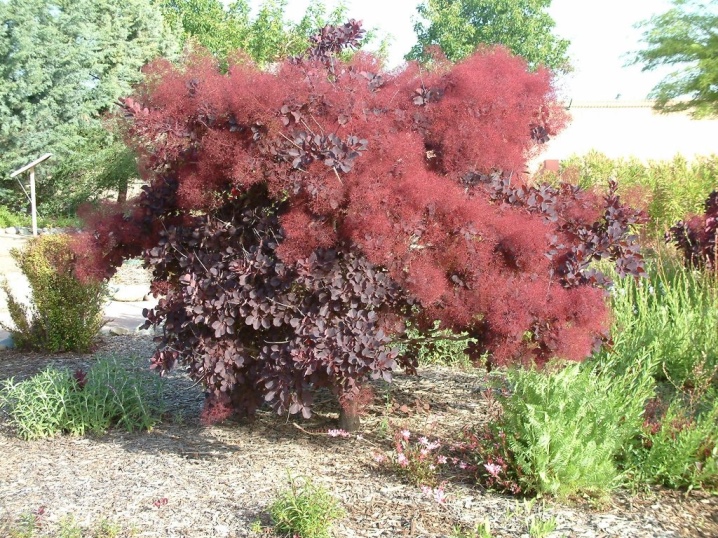
Disembarkation rules
When planting a scump in open ground, certain rules must be followed. Seedlings in containers, purchased in the nursery, are removed from the container 24 hours before being sent to a new place and placed in water so that the roots are saturated with moisture. Immediately before planting, they are examined, if necessary, pruned, removing damaged areas, and treated with an antifungal drug and crushed charcoal.
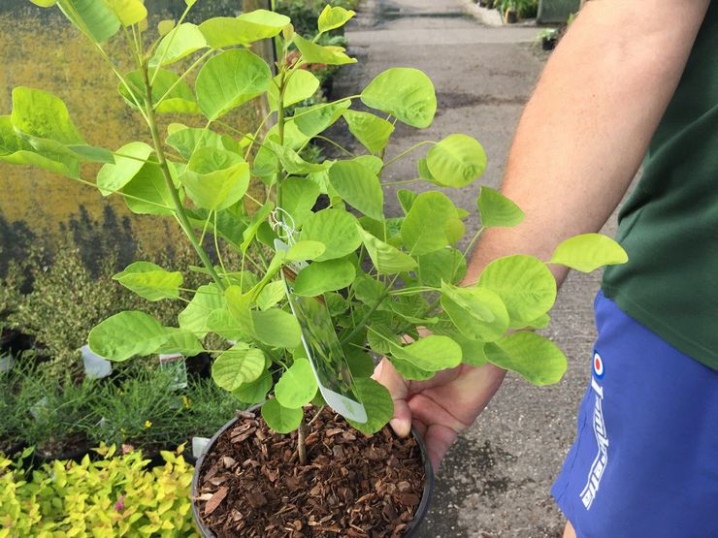
The size of the hole should be slightly larger than the diameter of the roots. Unlike other scumpia plants, the preparation of a special soil mixture or preliminary fertilization of the planting site is not required. The poorer the soil, the higher the chances of successful rooting of the plant. The only important measure is thorough moistening of the soil. To do this, it is enough to pour 2 buckets of water into the prepared hole and let it be completely absorbed.
The planting process begins by creating a small embankment in the center of the planting hole. The roots of the plant, soaked in water, are gently straightened, it is installed on top of the formed hill. After that, it remains to fill the hole with soil and compact its surface. Abundant watering is required at the end of planting work. It is worth considering that the location of the root collar is also important - in the scumpia it is not buried, but is left above the ground by 2-3 cm, since after the water leaves, the roots of the plant settle down a little.
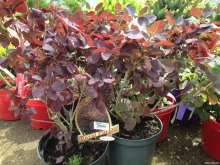


How to care?
Caring for a scumpia is not too laborious, but it requires taking into account the experience of growing a plant in a specific climatic zone. In the Urals, in Siberia, it is better to plant more winter-hardy woody forms of deciduous plants or shrubs "Lady Young", Grace. It must be remembered that low temperatures provoke the development of such a phenomenon as slower plant development. Initially, for cultivation, you need to choose varieties that are distinguished by increased winter hardiness, and it is imperative to provide them with shelter in the winter periods of the year. However, even when it freezes to the ground level, the plant most often recovers during the growing season.
In the Crimea and the Caucasus, you can plant purple scumpies without restrictions, without fear that they will freeze out. Here it is possible to grow the most capricious varieties that are sensitive to weather changes. Mountainous areas with rocky soil are well suited for planting. In such conditions, the skumpia feels most comfortable.

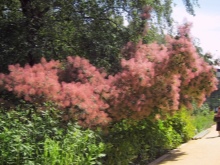
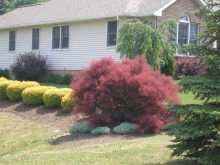
Watering
Scumpia is not very demanding on frequent watering, but during long periods of drought it can die. Timely mulching can regulate the frequency of moisture application. Usually, watering is carried out no earlier than the earth dries up in the plant's trunk circle. You need to bring water under the root, avoiding it getting on the leaves of the plant.
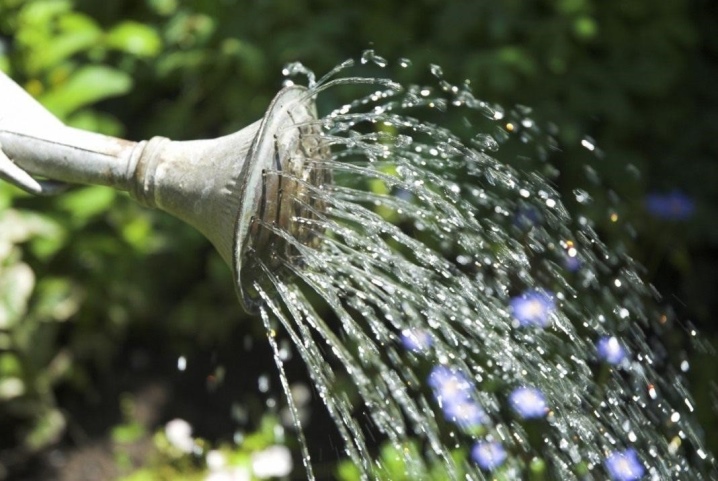
Top dressing
There is no particular need for additional fertilization of the soil in the skumpia, but top dressing helps to enhance flowering. That is why such support measures should not be neglected. In the spring, it is recommended to feed the plant with a phosphorus-potassium-based mineral complex for shrubs. Before flowering, it is recommended to apply organic fertilizers: manure dissolved in water or bird droppings. At other times, feeding is not required.
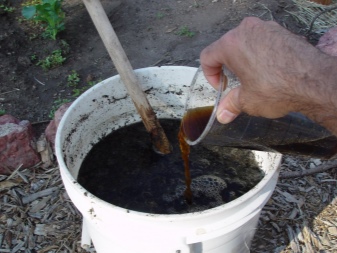
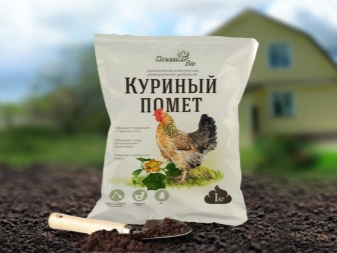
Pruning
In order for the crown of the scumpia not to lose its decorative effect, the culture requires periodic pruning. It is performed every 2-3 years in early spring, before the appearance of buds, combining shaping with the sanitary removal of frozen or dead branches. It is worth considering the following points:
- in young shoots, 2/3 of the total length is removed to stimulate branching;
- branches 2 years old and older are sawn under the trunk;
- the general shape of the crown should be close to spherical.
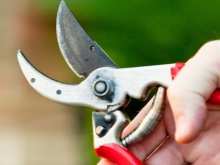
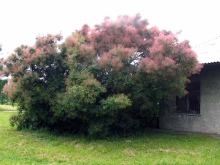

After pruning, the skumpia takes on a spectacular appearance, its leaves become larger. The compact spherical crown is recommended for both shrubs and young trees. Do not forget that in cold climates the plant often grows no more than 1.5 m.
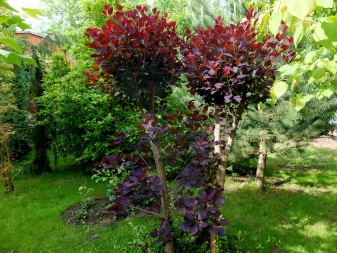

Flowering period
Scumpia does not begin to bloom immediately - only a plant that has reached the age of 6 years can begin to form inflorescences. By that time, its rapid growth slows down significantly, the scumpia becomes decorative, lends itself well to crown formation. The culture blooms from the end of May; in July, among the fleecy pedicels, fruits are formed, consisting of a massive bone and a thin leathery shell with a small amount of pulp. Special care for this time of the scumpia is not needed, it is enough to feed it before flowering.
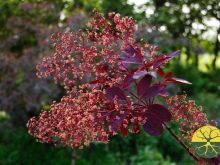
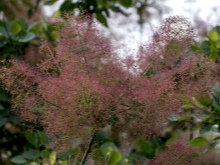

Preparing for winter
Young scumpia seedlings need mandatory shelter for the winter, especially if the atmospheric temperatures drop to the limit of -15 degrees. Warming can be done with a non-woven material; on top it is additionally wrapped with cling film. The root area must be mulched with peat, sawdust, humus. And also under the nonwoven material, you can place spruce branches, securing it to the scump with twine. This will keep the air circulating and help protect the shoots from frostbite.
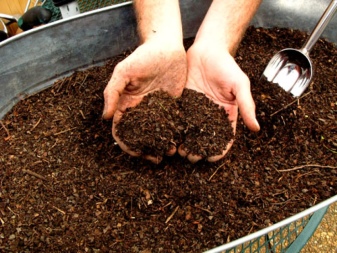
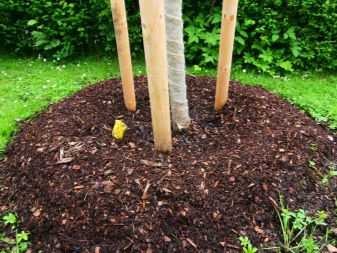
Reproduction methods
A beautiful shrub after acclimatization can give life to new plants. Scumpia can be propagated by generative and vegetative methods. It is customary to carry out the main work in the fall, but not less than 2 weeks before frost. The division of the bush is rarely used due to the fact that the survival rate of such seedlings is significantly lower than when using other methods of vegetation. At the same time, there is a considerable risk of damage to the roots of the main, mother plant.

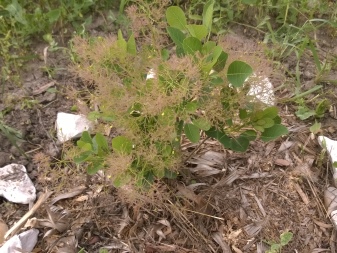
Seeds
The most popular breeding method, but it requires some effort. Seeds with a dense shell require preliminary preparation before planting. For them, a stratification procedure is carried out, which lasts 5-6 months at a temperature of +3 to +5 degrees. With autumn planting, you can do without it, since during the winter the seed shells will receive sufficient stimulation for subsequent germination.
Sowing is carried out to a depth of 2 cm. It is not required to cover the seedlings of the autumn period for the winter. The seed-planted scumpia will germinate 12 months after planting. The germination rate when sown in open ground is higher than at room forcing.
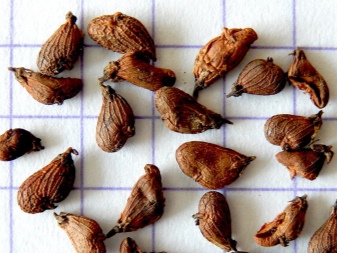
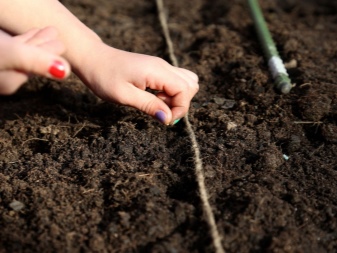
Cuttings
Cuttings are carried out in the summer, at the beginning of June. Green shoots are soaked in a rooting stimulator for 12 hours, "Heteroauxin" will do at a concentration of 20 ml per liter of water. The cuttings are transferred to a substrate of turf, sand and peat mixed in equal proportions. It is good if they take root in a greenhouse. The soil must be constantly moistened, in which case the germination of the roots will take up to 4 weeks.


Layers
The most efficient method of propagation, ensuring rooting is guaranteed. A strong lateral shoot for the formation of a layering must be cut along the surface of the bark, bent to the ground so that the bare place touches the soil. Further, using staples, the branch is fixed in this position until the roots and young growth appear. After rooting, the new scumpia can be separated from the mother bush and transplanted.
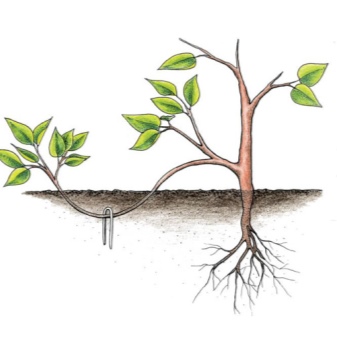
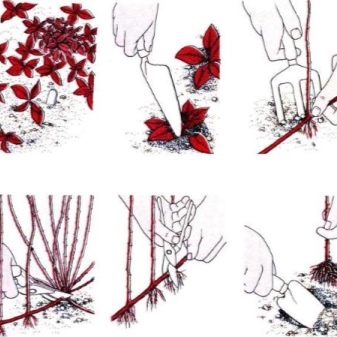
Diseases and pests
Scumpia is initially very resistant to the development of various diseases. In most cases, the plant does not require specialized sanitization; preventive measures are sufficient. The drying out of the branches observed in spring may be associated not with diseases, but with freezing of the shoots. If the scumpia dries up in the middle of the growing season, it is worth considering the possibility of replanting, experimenting with the frequency of watering, and removing the branches of other plants that interfere with the penetration of light.
Among the pests, a special danger is represented by the scumpian beetle, the fawn leaf beetle. These pests spoil the leaves, make the appearance of the plant unattractive. Insecticidal treatment helps to cope with the problem. It is performed before or after flowering.
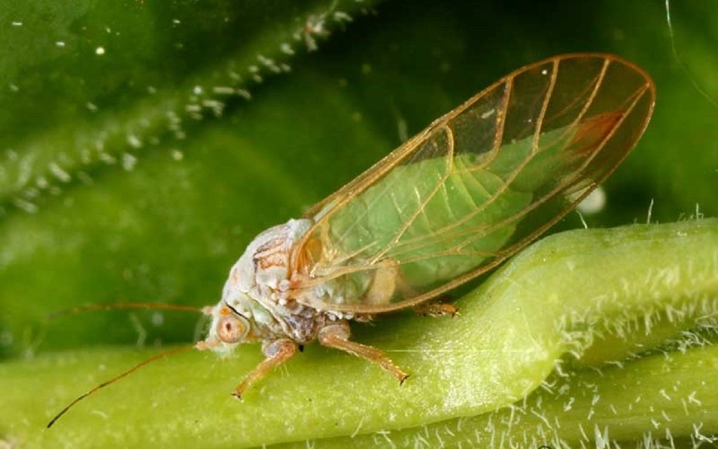
Use in landscape design
When planting a skumpia on a site, it can be used to significantly diversify the landscape. The American variety is very decorative - the tree is distinguished by multi-colored green, red, maroon foliage. In the USA, American Smoketree is used in the design of large parks and squares - at a height of about 5 m, it forms spectacular alleys. Due to its frost resistance, this type of scumpia is well suited for Russian open spaces. It can be used in single or group plantings, but it is better to use it as a tapeworm, since the tree does not tolerate crowding.
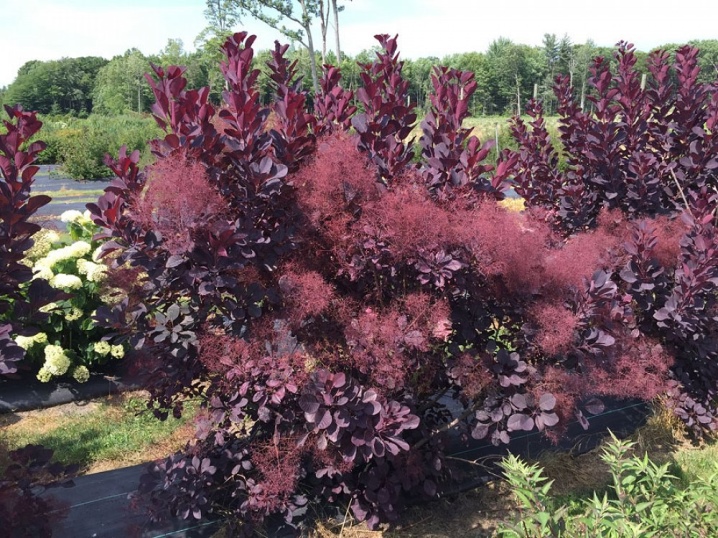
Much more often it is used in landscape design ordinary scumpia - the shrub form takes root well, in the climate of the Moscow region it requires a little more attention, but in general it is adapted even to frosty winters. In plantings, it is usually combined with other deciduous crops that have a bright, unusual crown color, forming original mixborders. It is good to plant skumpia along the fences on the side of the road - the plant provides effective air purification, absorbing gases entering the atmosphere.
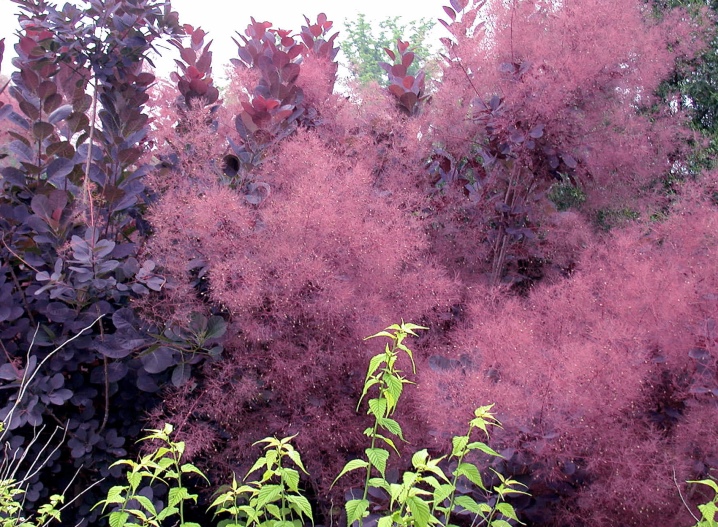
In the southern regions of Russia, in the Black Sea region, shrubs are planted on stony soils, natural or artificial rockeries are created. Scumpia grows well as part of mixed hedges, low conifers look impressive against its background.In addition, the bright foliage of the shrub is harmoniously combined with silvery-gray lavender, lilac-purple marjoram, sage.
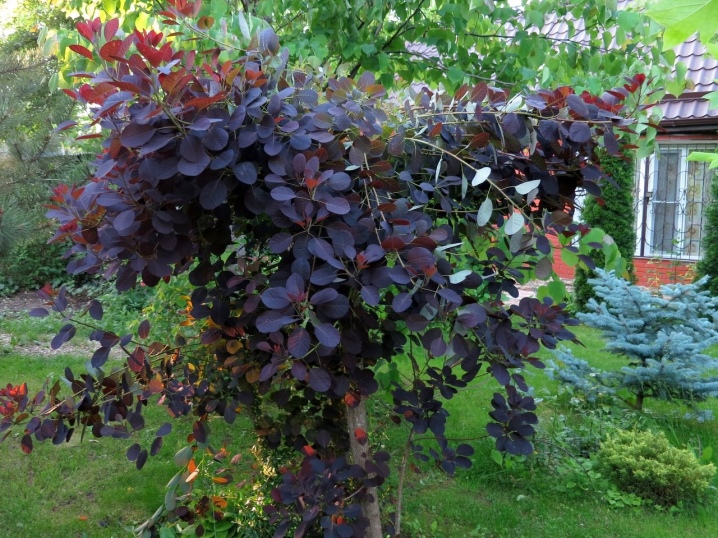
Care of the scumpia, see the video below.



































































The comment was sent successfully.